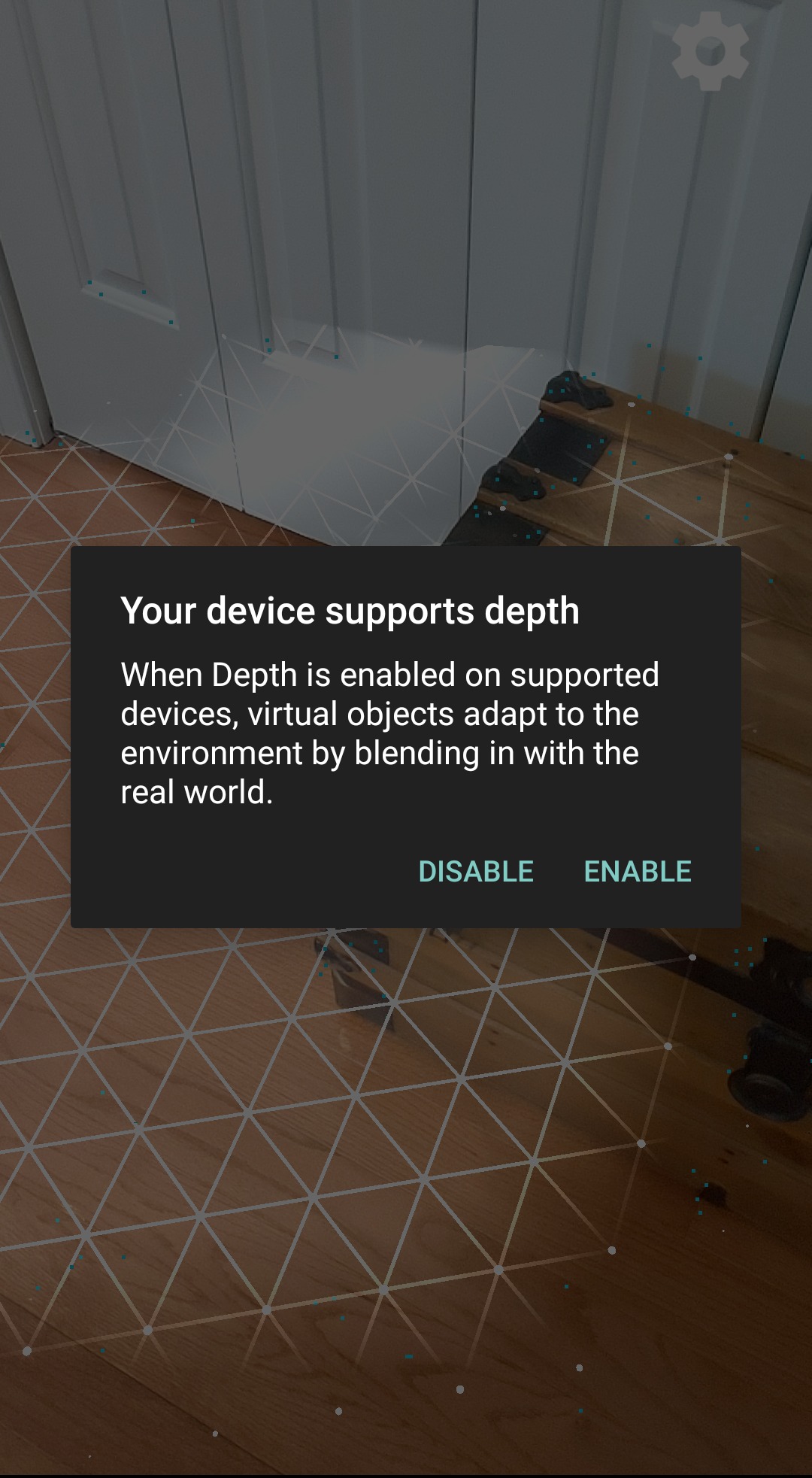- إعداد بيئة التطوير لواجهة Depth API
- يمكنك تجربة التظليل ومشاهدة خريطة العمق في نموذج تطبيق.
المتطلبات الأساسية
- استوديو Android الإصدار 3.1 أو الإصدارات الأحدث مع الإصدار 7.0 من "منصة حزمة تطوير البرامج (SDK) لنظام التشغيل Android" (مستوى واجهة برمجة التطبيقات 24) أو أعلى
- جهاز Android يتوافق مع Depth API اطّلِع على قائمة الأجهزة المتوافقة مع ARCore لمزيد من التفاصيل.
- فهم أساسي لتطوير برامج Android. إذا كنت مستخدمًا جديدًا إلى Android، يُرجى مراجعة إنشاء أول تطبيق Android لك للمبتدئين
- فهم أساسي لواجهة برمجة التطبيقات Depth API. إذا كنت جديدًا في العمل باستخدام Depth، يمكنك الاطّلاع على مقدمة عن واجهة برمجة التطبيقات Depth API.
فتح نموذج المشروع
يستخدم هذا البدء السريع OpenGL، لعرض رسومات متجهات ثنائية وثلاثية الأبعاد. تعليق يجب تفعيل ARCore قبل بدء استخدام الخطوات التالية.
احصل على نموذج المشروع عن طريق استنساخ المستودع باستخدام الأمر التالي:
git clone https://github.com/google-ar/arcore-android-sdk.git
في "استوديو Android"، افتح نموذج المشروع hello_ar_c.
تنفيذ النموذج
يتيح لك نموذج تطبيق Depth API وضع أشكال افتراضية من Android في وتبديل نظام التظليل لمعرفة الفرق. كما يتيح لك التبديل تصور خريطة العمق في مساحة معينة.
تأكد من اتصال جهاز Android بجهاز التطوير وانقر على
Run  في "استوديو Android".
في "استوديو Android".
قد يطلب منك جهازك تثبيت التطبيق أو تحديثه. خدمات Google Play للواقع المعزّز إذا كان مفقودًا أو قديمًا. انقر على CONTINUE لتثبيته من خلال "متجر Google Play".
تفعيل العمق
عند تشغيل التطبيق لأول مرة ووضع شكل Android، سيظهر مربع حوار عليكم لتفعيل العمق. ولا يظهر هذا التحديث إلا في المرة الأولى التي يتم فيها تشغيل التطبيق، وضع Android لأول مرة. انقر على Enable لإضافة تأثير التظليل.
تبديل التظليل ومؤثرات عرض خريطة العمق
انقر على رمز الترس لتبديل التظليل وتصوير خريطة العمق. اختَر Enable depth لتفعيل ميزة التظليل. اختيار Show depth map من أجل عرض تصور لخريطة العمق على شاشة الجهاز.
على سبيل المثال، تُظهر الصور التالية شكل Android افتراضيًا في مساحة حقيقية. تحتوي على صندوق بجانب الباب. في الصورة الأولى، يمثّل ابتكارًا تتداخل بشكل غير واقعي مع حافة الجذع. في الصورة الثانية، إظلام نظام Android محجوبًا، ويبدو أكثر واقعية في المحيطة به.
تعرض الصور التالية صورة كاميرا لممرّ مع دراجة على وتصور لخريطة العمق التي تم إنشاؤها لتلك الكاميرا .
الخطوات التالية
ابدأ استخدام واجهة برمجة التطبيقات Depth API في تطبيقاتك الخاصة. لمزيد من المعلومات، يُرجى الاطّلاع على:




